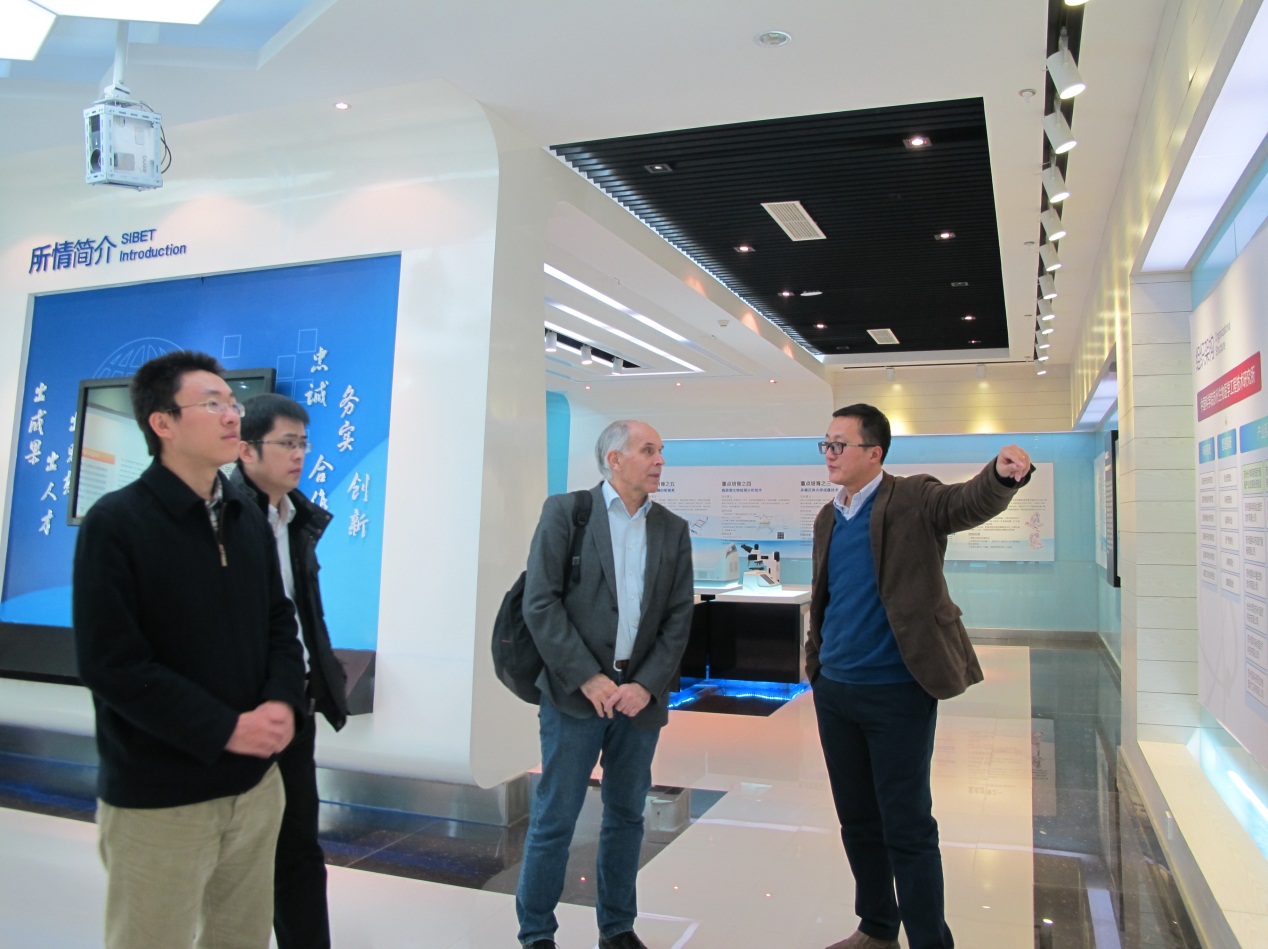On Dec. 6th, Prof. Arthur G. Konnerth from Institute of Neuroscience,Technical University Munich, Germany arrive Shanghai,the next day he visited SIBET.
Prof. Tang Yuguo, director of our institute, hosted the meeting. He welcomed them warmly and gave them a detailed introduction of the history and current development of SIBET. Around 30staff members from SIBET attend the meeting and communicate with one another. Afterwards, Prof. Konnerth visited Brain Research Instrument Innovation Center, Jiangsu Key Laboratory of Medical Optics discussed the purpose of further cooperation with researchers from SIBET.
One the lecture, Prof. Konnerth mentioned The invention of two-photon microscopy initiated the development of a variety of methods that allow the recording of detailed, dynamic images of activity in individual nerve cells, dendrites and synapses, thereby transforming the study of development, plasticity and functional circuitry of the healthy but also that of the diseased brain.
An example of the usefulness of two-photon microscopy is analysis of the alterations of neuronal function in Alzheimer’s disease (AD). An essential feature of this neurodegenerative disease is the accumulation of amyloid-beta in the brain. However, the impact of amyloid-beta-accumulation on neuronal dysfunction on the single cell level remained poorly understood. Here, by using in vivo two-photon calcium imaging in a mouse model of AD, we made observations that were in striking contrast to a popular hypothesis. While, in line with that hypothesis a silencing of neuronal activity was indeed observed in a small group of cortical neurons, a substantial fraction of neurons exhibited an unexpected increase in the frequency of spontaneous calcium transients. These “hyperactive” neurons were found exclusively near the plaques of amyloid beta–depositing mice (Busche et al., Science, 2008).
When analyzing the visual cortex, we found that a progressive deterioration of neuronal tuning for the orientation of visual stimuli occurred in parallel with an age-dependent increase of the amyloid-beta load (Grienberger et al., Nat. Comm, 2012). As in cortical neurons, there was a marked increase in the fractions of both silent and hyperactive neurons also in the plaque-bearing CA1 region of the hippocampus of old transgenic mice (Busche et al., PNAS, 2012). However, in the hippocampus of young mice, we observed a selective increase in hyperactive neurons already long before the formation of plaques, suggesting that soluble species of Abeta may underlie the impaired neuronal activity. In support of this model, we found that the acute treatment of transgenic mice with a gamma-secretase inhibitor reduced soluble Abeta levels and rescued the neuronal dysfunction. Together, our results identify neuronal hyperactivity (Busche and Konnerth, Bioessays, 2015) as a major cellular mechanism underlying circuit dysfunction in AD.


(Information Source: Suzhou Institute of Biomedical Engineering and Technology,CAS)

